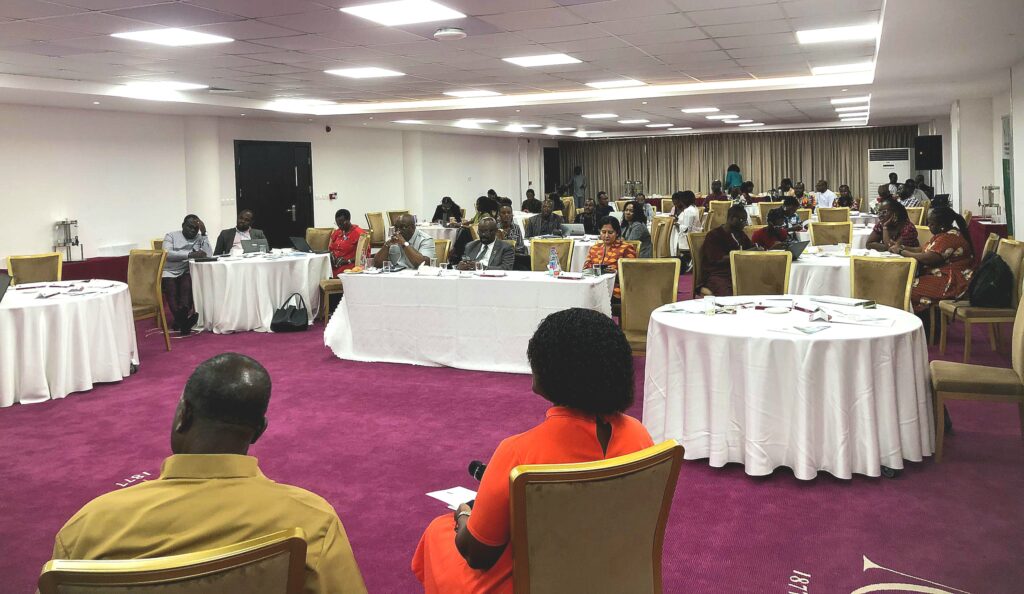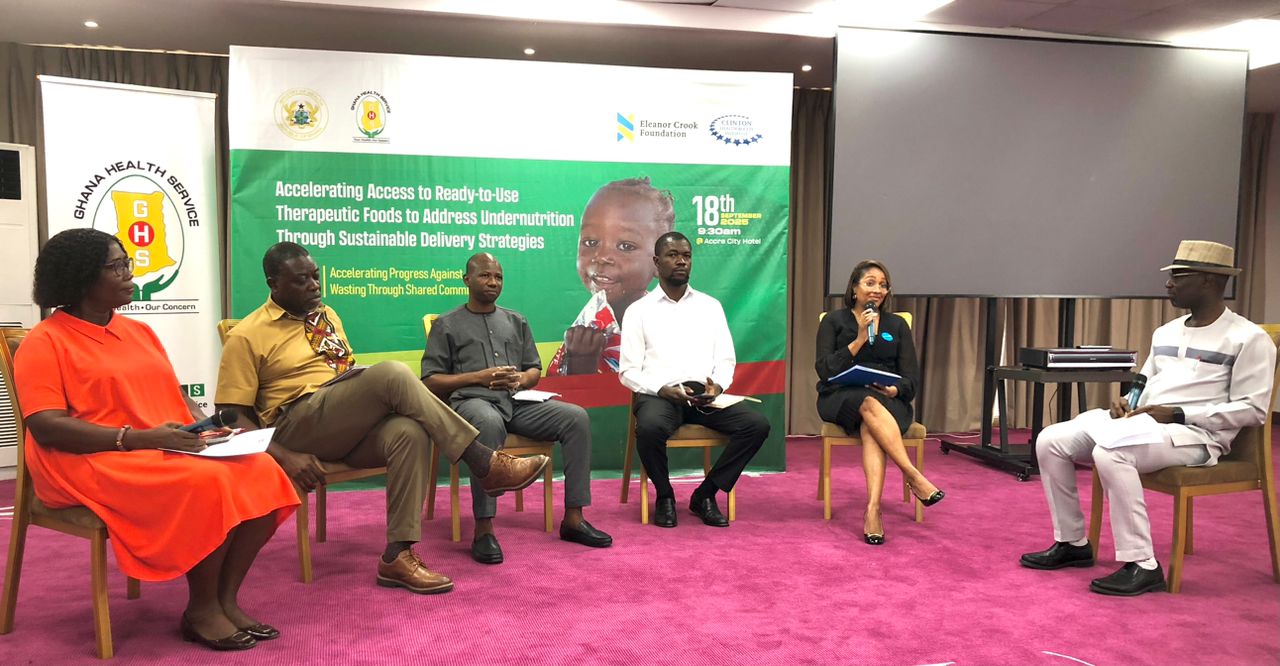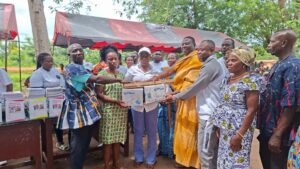By Jones Anlimah
Ghana has launched a new phase of an ambitious national project aimed at expanding access to Ready-to-Use Therapeutic Foods (RUTF) in a bid to save the lives of thousands of children suffering from severe malnutrition.
The initiative, titled “Accelerating Access to Ready-to-Use Therapeutic Foods to Address Undernutrition through Sustainable Delivery Strategies,” is being implemented by the Ghana Health Service (GHS) in partnership with the Eleanor Crook Foundation (ECF) and the Clinton Health Access Initiative (CHAI). The US$2.15 million investment marks the first time RUTF will be routinely available through Ghana’s public health system, providing a pathway toward long-term government-led nutrition services.
Undernutrition remains a major public health challenge in Ghana, with the 2022 Demographic and Health Survey reporting a 6 percent prevalence of wasting among children under five, including 1.2 percent classified as severely wasted. Each year, over 61,600 children in Ghana suffer from severe wasting, a life-threatening condition, yet fewer than one in six currently receive treatment.

Since 2007, Ghana has implemented the Community-Based Management of Acute Malnutrition (CMAM) strategy, which uses RUTF as the standard treatment recommended by the World Health Organization. However, access has long been hampered by inconsistent donor funding. With the new partnership, Ghana is taking a decisive step to ensure sustainable access by embedding RUTF into the National Health Insurance Scheme and national supply chain systems.
Between January 2024 and June 2025, the project supported key milestones, including the revision of national CMAM guidelines, the inclusion of RUTF in the Essential Medicines List, and the training of over 80 master trainers. In addition, 13,000 cartons of RUTF were procured at a 30 percent lower cost, alongside the supply of anthropometric equipment such as solar-powered weighing scales, height boards, and MUAC tapes to improve early detection and treatment.
The second phase, which is running from July 2025 to December 2026, seeks to achieve 90 percent treatment coverage nationwide by scaling access to RUTF and strengthening financing through the NHIS. It will also expand treatment to include high-risk moderate wasting cases, improve procurement and supply systems, and institutionalize government ownership of nutrition financing.

Speaking on the launch, Dr. Yashodhara Rana of the Eleanor Crook Foundation said:“For too long, life-saving treatment for malnourished children has depended on donors and short-term fixes. Now Ghana has pledged to finance and scale wasting treatment through its own health system, and that’s the real game changer. Ghana’s leadership on wasting treatment is a milestone worth celebrating and a powerful signal to other countries that sustainable and government-led solutions are within reach.”
The intervention aligns with Ghana’s Nutrition for Growth commitments and directly contributes to the attainment of the United Nations Sustainable Development Goals (SDGs), particularly SDG 2 (Zero Hunger) and SDG 3 (Good Health and Well-being). By integrating wasting treatment into the national health system, Ghana is setting an example of sustainable, government-led action to safeguard children’s health and secure their future.






